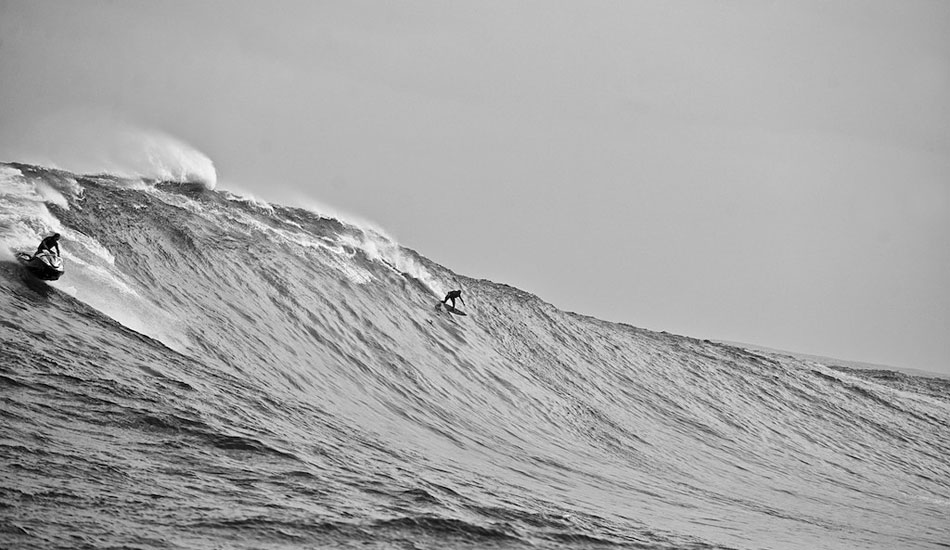History Behind the Invention of Tow Surfing

Dave Kalama dropping Laird Hamilton off at Jaws in the middle of the tow-revolution. Photo: Tim Mckenna
Date: Winter, 1992
Location: Backyards, North Shore, Oahu
Moment: Laird Hamilton, Buzzy Kerbox, and Darrick Doerner tow into 15-20 foot waves using a Zodiac, kicking off the tow-movement that plotted the course for surfing’s future.
For years, big wave surfing was stuck on a plateau. Up until the early 1990s, waves larger than somewhere around the 20 foot mark were, for the most part, thought of as simply too big to surf. That seemed to be the range where Mother Nature was too strong to overcome–human paddle power just wasn’t enough, and waves that big were deemed “impossible” to surf. But all that changed when Laird Hamilton, Buzzy Kerbox, and Darrick Doerner drove a Zodiac out to Backyards on the North Shore of Oahu on a 20 foot day, grabbed onto a rope, and yanked each other into some of the biggest waves ever ridden. And that was just the beginning.
The idea for tow surfing wasn’t a new one. In fact, according to the Encyclopedia of Surfing, it had been tossed around since the early ’60s, when Mike Doyle wrote that “the surfer might be towed into the wave by a boat much like a water-skier.” For decades after that, someone would occasionally give it a shot. In 1987, for example, Herbie Fletcher towed Tom Carroll and Martin Potter into a couple of 10-foot waves at Pipeline. It wasn’t taken seriously, however, until that day at Backyards, and even then it took a minute to catch on. But when it did, it took the world by storm.







